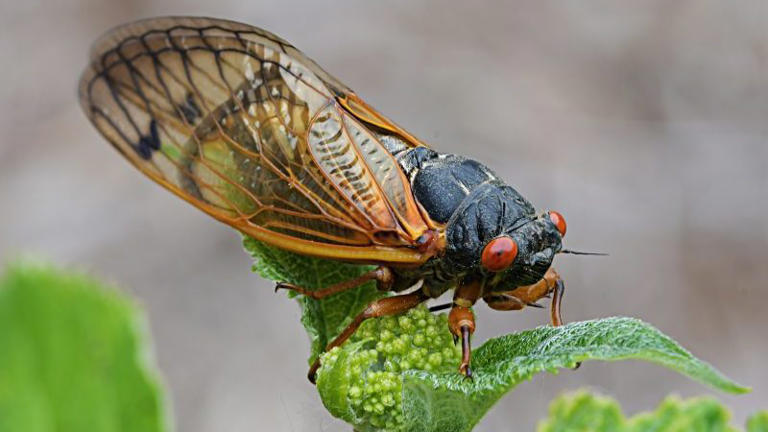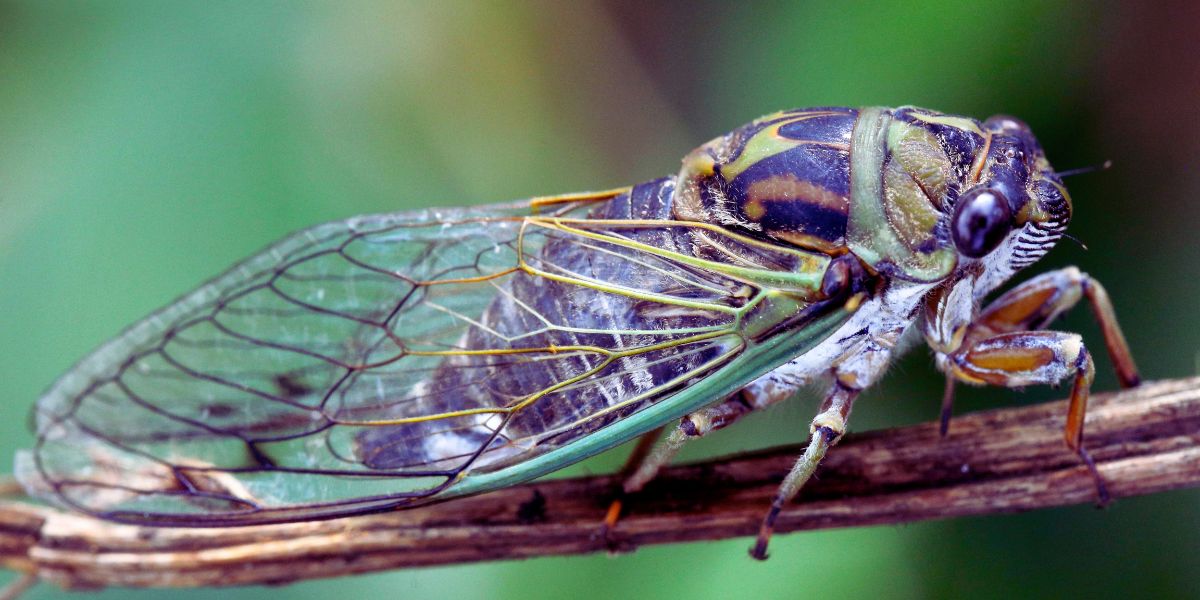Both the 13-year and 17-year Cicadas in Illinois are emerging simultaneously for the first time in 221 years. Find out more about the double brood that is infiltrating the North of Champaign and Springfield.
Emergence of Cicadas in Illinois
The Chicago area is anticipating the arrival of both the 17-year cicadas and the larger annual cicadas, also known as Dog Day cicadas.
Over the past 17 years, billions of cicadas in Illinois, especially belonging to Brood XIII have been residing underground. They have been sustaining themselves by extracting fluid from plant roots, according to Allan Lawrance, associate curator of entomology at the Peggy Notebaert Nature Museum in Chicago. Lawrance further explained that these cicadas typically emerge, often in mid-May, and are expected to remain active for a duration spanning four to six weeks.
As per certain experts, the initial emergence of cicadas occurred approximately two weeks earlier than the historical average. However, the emergence will remain sporadic due to varying factors such as soil temperature, mulch composition, and turf grass conditions, all influencing cicadas differently. For instance, areas near pavement tend to have warmer soil, prompting cicadas in those locations to emerge more rapidly.

Chicago’s soil temperature reached 64 degrees on Tuesday morning, a crucial milestone for the emergence of cicadas in Illinois. Meteorologist Ed Curran used a digital thermometer to measure the temperature 8 inches underground, the depth necessary to determine the soil temperature required for emergence.
In a year of complete emergence, cicadas surface and then proceed to mate, a process often accompanied by the familiar noise associated with cicadas. However, experts from the DuPage Forest Preserves note that it typically takes about a week from the initial emergence before cicadas commence mating.
The historic cicada emergence of 2024 will witness the simultaneous emergence of two broods, a phenomenon not witnessed in over two centuries. “This is a significant year for Illinois,” remarked cicada expert Catherine Dana, affiliated with the Illinois Natural History Survey, in a conversation with NBC Chicago. “Cicadas will be emerging across the entire state.”
Insect-Free Zone for Cicadas in Illinois

As cicadas gradually emerge from the ground, intending to spread across the area, an iconic location in Chicago has dubbed itself a “Cicada-Free Zone” – in a somewhat tongue-in-cheek manner. While the declaration is more whimsical than definitive, organizers suggest that Navy Pier may indeed be less appealing to cicadas because of its artificial construction and proximity to water.
The official declaration is scheduled for Thursday morning. Organizers will wear “The Great Cicada Escape” t-shirts, and performers will entertain with a rendition of “Cecilia” by Simon & Garfunkel aptly named “Cicada.” While it remains uncertain whether the cicadas emerging in Illinois will make an appearance at the Pier, experts suggest they are more inclined to inhabit wooded areas.
Cicadas Map
If you want to stay safe during the Cicadas in Illinois attack, here are the highlighted Cicadas in Illinois zones.
The Northern Illinois Brood, also known as Brood XIII, is expected to be most prevalent in areas of northern Illinois and Indiana, with potential sightings extending into Wisconsin, Iowa, and parts of Ohio. This brood is anticipated to dominate the upcoming cicada emergence in the Chicago area. Cicadas typically have a lifespan of around four weeks, indicating that this emergence will likely continue until at least mid-June.
In contrast, Brood XIX, or the Great Southern Brood cicadas, boasts a broader distribution, encompassing regions of Missouri, Illinois, Louisiana, North Carolina, Virginia, and Maryland.
How Long with the Cicadas in Illinois Last?
Cicadas in Illinois will emerge above the ground to mate.
The female cicadas deposit their eggs in woody plants by using their ovipositor, or egg-laying organ, to inject approximately 10-20 eggs into branches. According to Johnson, females have the capacity to lay around 500 to 600 eggs.
These eggs typically hatch about six weeks after being laid, and the newborn cicadas drop to the ground, eventually burrowing into the soil, where they will remain for another 13 or 17 years.
Meanwhile, their adult counterparts, having completed the mating process, perish shortly thereafter, with their above-ground lifespan lasting only about a month.
Hence, the Cicadas in Illinois are expected to stay until mid-June or July if they emerge around mid-May.
